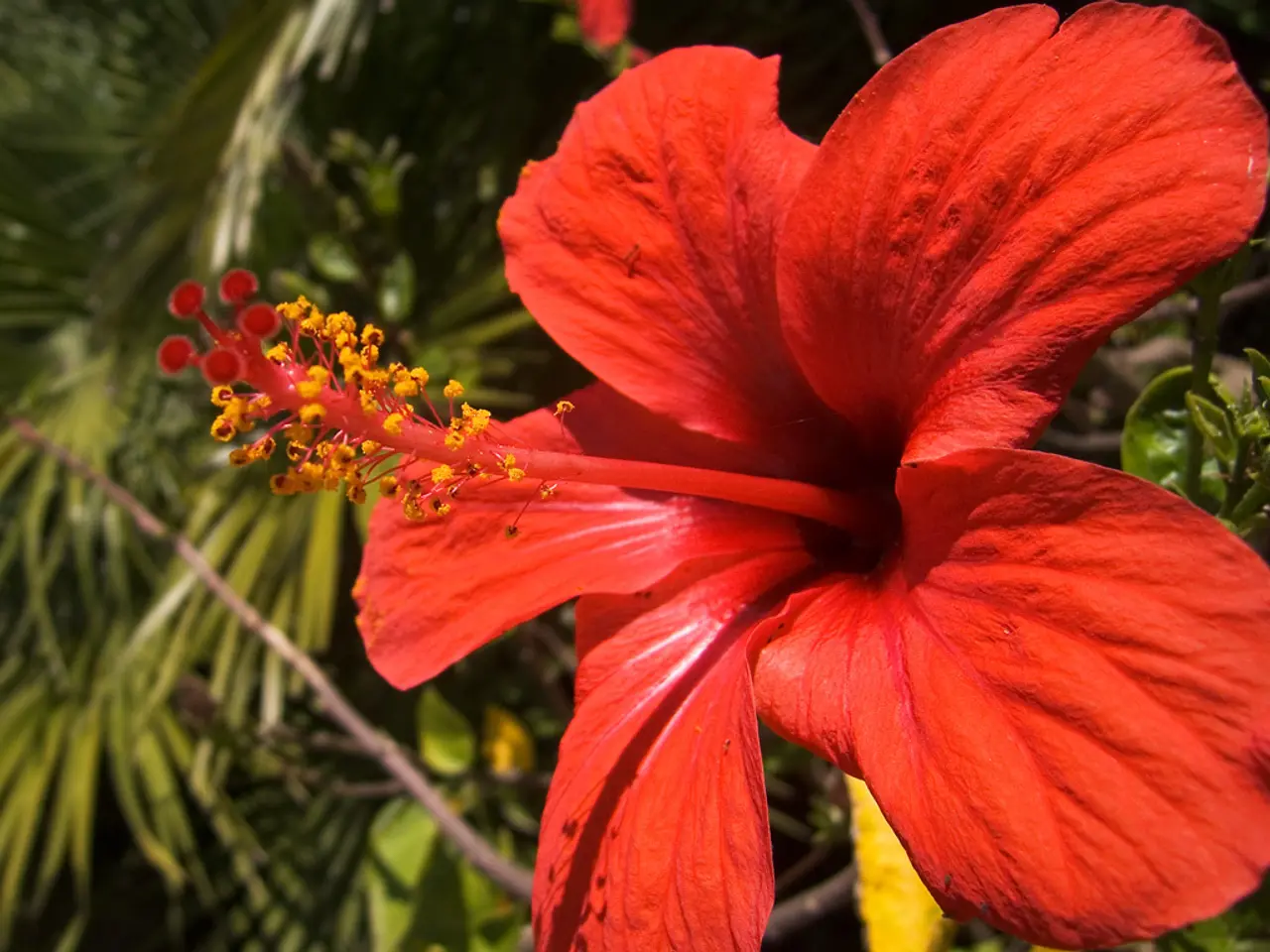Yellowing Hibiscus Leaves: Frequent Causes and Solutions Identified
The vibrant, tropical beauty of hibiscus plants can add a touch of elegance to any landscape, patio, or indoor space. However, one common issue that may cause concern for hibiscus owners is the yellowing of leaves. This article aims to provide a clear understanding of the causes and solutions for this problem.
Yellowing of hibiscus leaves is primarily due to stress caused by overwatering, nutrient deficiencies, sudden temperature changes, pests, or improper sunlight exposure.
Common causes include overwatering, which can lead to root rot and prevent nutrient uptake, resulting in yellow leaves. Hibiscus prefers moist but well-drained soil and needs soil to dry slightly between waterings.
Another frequent cause is a lack of nitrogen or iron, which can lead to general yellowing or pale leaves with green veins (chlorosis). Regular application of a balanced fertilizer (e.g., 10-10-10) every two weeks during growth seasons helps prevent this. Chelated iron supplements can correct iron deficiency.
Sudden drops or excessive heat can stress plants and cause yellowing, as can pests such as aphids, spider mites, thrips, and whiteflies. Hardy hibiscus needs full sun, while tropical hibiscus likes bright light but can be damaged by excessive direct sun, causing leaf stress.
To address yellowing leaves, adjust watering habits to avoid waterlogging. Ensure pots have drainage, and the soil is well-draining. Use appropriate fertilizers regularly to supply nitrogen and iron. Maintain soil pH between 6.0–7.0 for nutrient absorption. Protect from extreme temperatures, and control pests using insecticidal soap or neem oil. Provide optimal sunlight: full sun for hardy varieties, filtered light for tropical hibiscus.
By maintaining stable growing conditions—consistent moisture, appropriate fertilizer, warm temperatures, and pest control—the yellowing of hibiscus leaves can be prevented or reversed. Weekly irrigation, pruning, and feeding are important for hibiscus plant health.
Sudden or rapid changes in hibiscus leaf appearance may be caused by stress or damage to the plant or its root system. Various foliar diseases will first manifest as chlorosis. Sap-sucking insects like aphids or spider mites may also cause yellowing of hibiscus leaves, but are generally not a serious concern to the plant's health except in severe cases.
With these tips in mind, you can keep your hibiscus plants healthy and vibrant. Happy gardening!
[1] Tilley, Nikki. (2021). The Hibiscus Plant: A Complete Guide to Growing Hibiscus. Skyhorse Publishing. [2] Bloomfield, Caroline. (2022). Marketing Communications Manager, [platform name]. [3] [Gardening website]. (2022). Hibiscus: Common Problems and Solutions. [URL] [4] [Gardening website]. (2022). Hibiscus Care: Watering, Fertilizing, and Light Requirements. [URL] [5] [Gardening website]. (2022). Pests and Diseases Affecting Hibiscus Plants. [URL]
Maintaining a healthy hibiscus lifestyle necessitates a home-and-garden approach that includes providing proper moisture, appropriate fertilizers, and optimal sunlight. Overwatering, nutrient deficiencies, pests, and improper sunlight exposure can cause yellowing leaves, which signifies stress in hibiscus plants.




